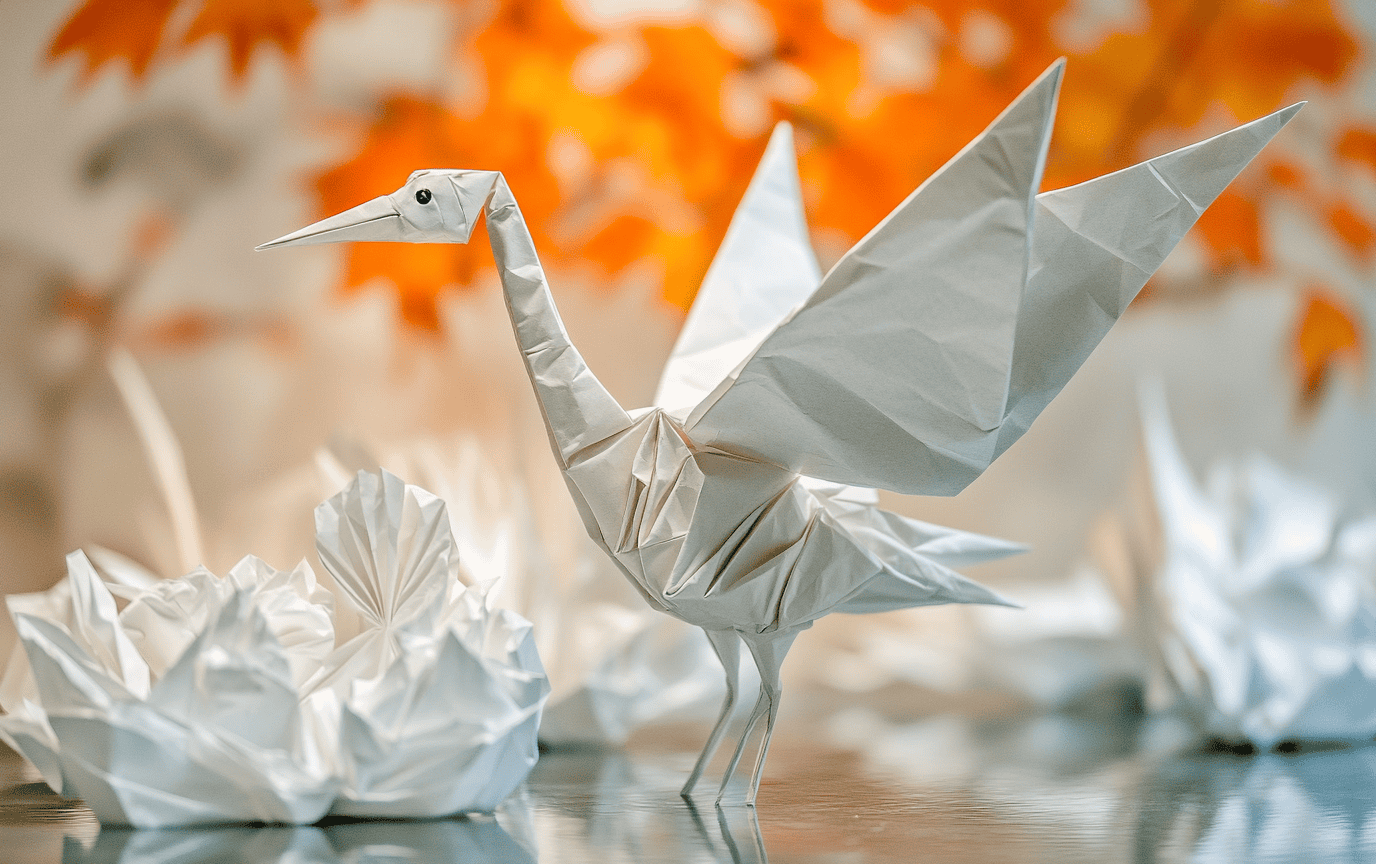The Art of Origami in Japan: A Journey Through Tradition and Innovation
The sun peeks over the verdant hills of Japan, casting a golden hue on the paper-thin sheets that await their transformation. Each crease whispers tales of tradition, ambition, and grace. Origami, the ancient art of paper folding, has found its place in the tapestry of Japanese culture, a delicate dance between simplicity and intricacy, a story unfolding with every fold and crease.
A History Woven in Paper
The captivating journey of origami began over a millennium ago when paper first arrived in Japan, courtesy of Buddhist monks who crossed the seas from China in the 6th century. It was a treasure—a rarity. The art of folding soon intertwined with the fabric of Japanese rituals, evolving from something graced only by the elite few to a treasure embraced by the masses during the Edo period (1603-1868). This was when paper became not only a medium but a vessel for creativity and expression, accessible to anyone willing to pick it up.
The term “origami” itself emerged in the late 19th century. A beautiful fusion of two words: oru (to fold) and kami (paper). Yet, beneath its simple definition lies a profound journey of cultural exploration, echoing the growth of Japan itself.
Symbolism and Cultural Significance
Look closely at each creation and you’ll see more than mere shapes; each model is a story interwoven with Japan’s rich heritage. Take the origami crane, known as tsuru—this delicate figure has come to symbolize longevity and peace. In the ashes of their sorrowing past, the Japanese birthed a profound tradition: the folding of 1,000 cranes, or senbazuru. It is said that if one manages to create this multitude, one’s wish will be granted. During times of illness or disaster, these cranes stand as beacons of hope, emitted from the fragile hands of those seeking solace.
Every fold speaks volumes. The dragon signifies power, the dragonfly embodies good fortune, and even the simple act of folding becomes a meditative prayer. This is where artistry intertwines with devotion, creating a heartbeat that resonates through generations.
Techniques and Innovations
Let’s unwrap the layers of origami techniques that breathe life into paper:
Traditional Origami
At its core, traditional origami invites artisans to create recognizable forms from a single square sheet, crafting beauty through simplicity without a trace of cuts or glue. This technique mirrors the Japanese philosophy of wabi-sabi, recognizing beauty in imperfection and transience. Each fold serves its purpose, building a structure celebrated for its minimalistic elegance.
Wet-Folding
A transformative twist was introduced by Akira Yoshizawa, a master of the craft. His method, wet-folding, involves moistened paper, lending a sculptural quality to creations. Designs blossom into more dynamic forms, where curves and intricate details harmonize in rhythm, guiding the eye and heart.
Modular Origami
And then, we have modular origami. A realm where the artist assembles numerous pieces to create complex structures, often capturing the eye with striking geometric patterns. Imagine a crystalline universe born from the combination of simple modules—it’s a visual symphony orchestrated by hands that remember the heartbeat of a world formed by paper and dreams.
Modern Applications and Global Reach
The tendrils of origami extend far beyond the paper boundaries of Japan. Today, it’s a bridge spanning education, therapy, and technology. In classrooms, origami teaches geometry, illuminating abstract concepts in a tangible manner. In therapy, it offers a tranquil respite from the chaos, allowing individuals to recalibrate their minds and find solace within folds.
Even in aerospace engineering, origami has carved its niche. Foldable solar panels that expand in space, structures that contract and unfold with precision—each concept roots itself in the ancient art of paper folding. With the digital platforms now at our disposal, origami enthusiasts across the globe unite, sharing the philosophy of this paper art. Online tutorials spring up like origami cranes, offering newcomers a gentle nudge into this mesmerizing world.
How to Get Started with Origami
Finding the courage to fold that first piece can be exhilarating and daunting. To guide you through the delicate initiation:
- Choose Your Paper: While authentic origami paper has its merits—thin, colorful, and resistant—any square sheet can serve as your canvas. Feel its texture against your fingertips.
- Learn Basic Folds: Start where all great journeys begin. The valley fold and the mountain fold are your gateways, simple yet foundational, forming the bedrock of more intricate designs.
- Practice and Experiment: Dive in! Initially, you may wish to create a paper crane or box, nurturing your skills while embracing every misstep as a part of the learning process.
Conclusion
Origami transcends mere paper; it’s a living narrative woven into Japan’s cultural identity. Each fold represents patience, creativity, and the beauty of transformation. As you navigate through the intricate patterns of paper and artistry, you unveil not just creations but echoes of a tradition that invites you—truly, deeply—to explore the silken layers of life itself.
When you pick up a piece of paper, remember: you are not merely folding. You are participating in a dialogue with the past, a reflection of your own path, and an artistic pursuit that binds travelers from all corners of the globe.
Interested in more insightful reads? Check out our Travel Tips section for the latest advice. For lifestyle inspiration, explore our Lifestyle category, and dive into amazing destinations at Destinations. Don’t forget to connect with us on YouTube, or follow our adventures on Instagram and Pinterest.













